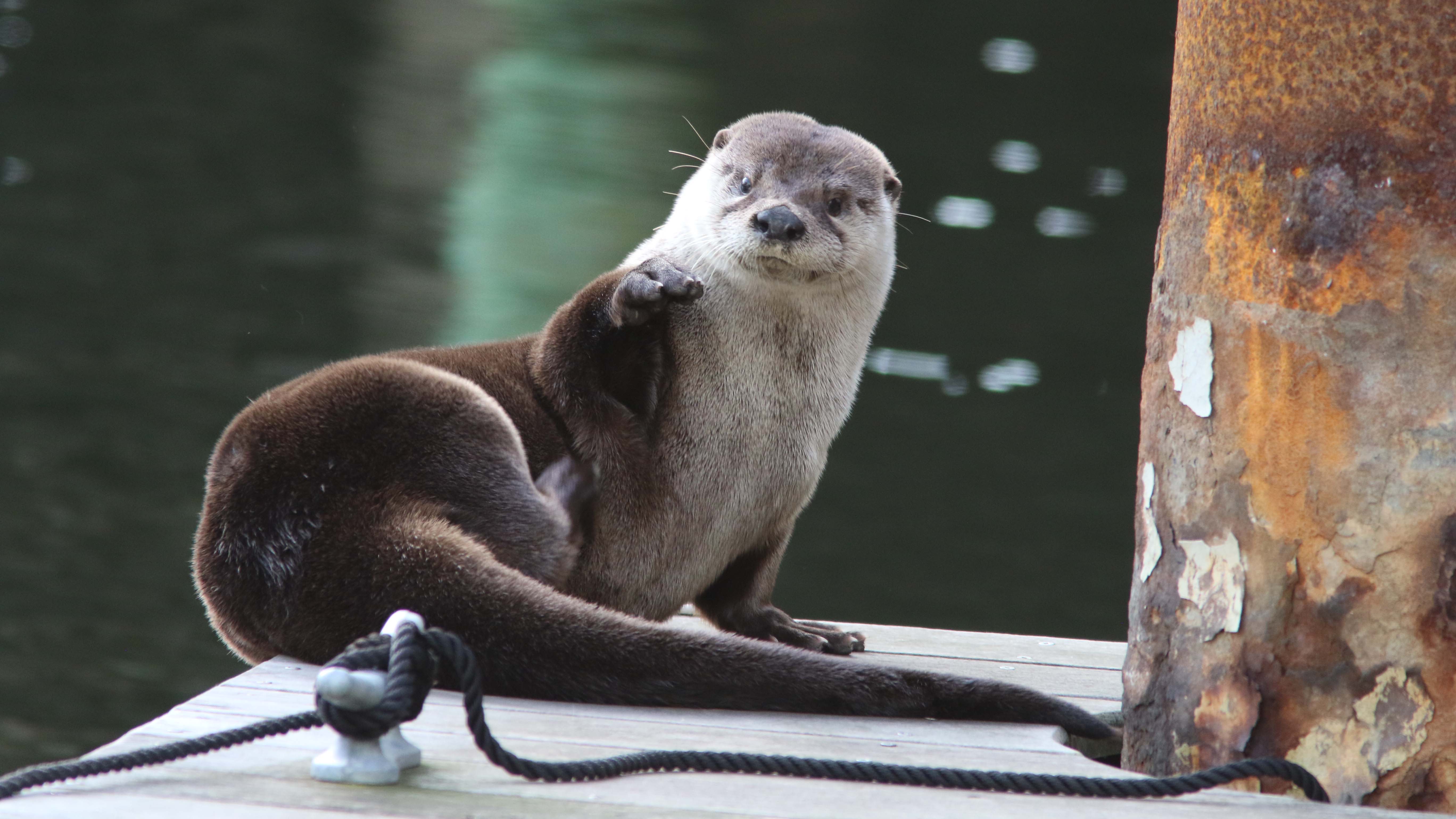
A few decades ago, otters were a rare sight in the Elizabeth River, which was considered one of the most polluted waterways in the Chesapeake Bay watershed.
But after years of river cleanup efforts, the creatures appear to be back – and thriving.
“For the longest time we said, ‘Where are the river otters?’” said Mary Bennett, an environmental scientist with the Elizabeth River Project. “And then all of a sudden people were sending us photos and videos.”
Now, the nonprofit wants more data in order to learn about the number and behavior of local otters, Bennett said.
To that end, they’ve launched a community science project called Otter Spotter.
It’s a partnership with the California-based River Otter Ecology Project. Co-founder and director Megan Isadore said much like the local effort, it began when people started noticing river otters in places where they were not expected around the San Francisco Bay Area.
“We thought, ‘Let’s look a little bit more into this,’” Isadore said. “Twelve years later, we have about 6,000 sightings.”
She said she’s interested to learn more about otters in the Elizabeth River particularly because it’s such a populated urban area.
Isadore visited the Elizabeth River Project’s Norfolk headquarters over the weekend to lead a sold-out workshop on how to spot otters in Hampton Roads.
She discussed some facts about river otters…
- They’re “voracious predators.” River otters have to eat almost 20% of their body weight each day – which means they have to catch and eat a lot of food, including fish, shellfish, insects and occasionally birds. They’re not afraid to chase after small mammals like foxes. If you come across an otter, keep your dogs away as they’ve been known to antagonize the pets. “It’s never a good outcome for the dog,” Isadore said.
- They look and act differently from sea otters. River otters don’t float on their backs like their sea counterparts. They move quickly in and out of the water. River otters also have a more pointed, slender head as opposed to sea otters’ trademark rounded, white face. The river otters have short-haired dense fur and a long, strong tail that is a third of their total length. They usually weigh between 11 and 32 pounds.
- Pups don’t like learning to swim. Otter mothers have to drag their 2-month-old babies to the water’s edge and “swim them around and make them go under until they figure it out,” Isadore said.
- They’re “connectors between urban places and wild lands.” Isadore said city dwellers don’t tend to think they’re near wildlife. But as we take up more and more land, species like otters are “living in closer proximity to us than ever.” River otters are adaptable and have taken advantage of human infrastructure like culverts, drain pipes and piers.
… as well as some tips for spotting them:

An infographic with information on what to look for.
- Survey riverbanks and docks: You may see an otter swimming in the water – or even “periscoping,” when it pokes its head out to see into the distance. But your best bet is likely to look along the shoreline. That could mean a vegetated river bank — otters like to flatten sections of grass to create a “couch.” But they also like to hang out on gravel or even rip rap, where they can hide. They also have been known to frequent docks, like at Nauticus in Norfolk.
- Look for their waste: Because they eat so much, otters also poop a lot. Searching for scat is one of the most surefire ways to find an otter. The scat can vary depending on their diet. They like to do their business on docks or piers, so that’s a good place to look.
- Look for tracks: Otter tracks can look different depending on whether they’re left in mud or elsewhere, but in general, keep an eye out for tracks that have five webbed toes, with claws.
- Distinguish from other animals: Observers can often mix up otters with other animals, especially when the sighting is brief or from a distance. Isadore said muskrats have clumpier, rodent-like fur and a skinnier tail. Beavers have a flat, rounded paddle-like tail. Nutria have white tips on their nose and look more rodent-like than otters.
- Listen. Otter communication sounds like chirping, much like birds.

An otter spotted last week in the Indian River in Chesapeake.
Meredith Callahan came to the workshop from her home nearby along the Lafayette River.
“I have never seen an otter in Norfolk, but I've been wanting to,” she said. “When I started to hear that people were seeing them in the area more often, I have been really intrigued.”
Callahan has some experience tracking otters. While studying abroad in Brazil, she tagged along with an ecologist doing so on the Amazon River.
She said she hasn’t interacted with otters since then, but hopes that’ll soon change.
“They're such fascinating creatures.”
Bennett, with the Elizabeth River Project, said otters are a good “sentinel species” indicating the overall health of the river. She hopes the new program gets residents to care about restoration work.
“Otters are very charismatic. People love them,” she said. “It's an animal that can create a movement.”
You can report local otter sightings online at https://elizabethriverotter.fieldscope.org/.
The Elizabeth River Project is holding a second, virtual Otter Spotter session on June 20.





